You may not find this terribly rewarding unless you're included here, so this is a good time for casual and random browsers to turn back before they get too caught up in the sweep and majesty of the proceedings and can't let go.

The Farnese Palace was conceived when Ottavio the 2nd Duke set up his court here and his wife Margaret set architects to designing it extremely ambitiously, and work was begun in 1568. Not too long afterward, Duke Ottavio (nervous about the locals) moved his court to Parma, and the project languished. After his death in 1586, the half-completed design was wrapped up by his grandson Ranuccio in 1602.

Margaret, in the meantime, was pursuing a busy career: she was shipped out by her half-brother the Spanish king in 1559 to administer his territories as Governor in the Netherlands, where she remained, serving ably in trying to prevent the Revolt of the disgruntled Netherlands with the interference of King Philip's warhawks Cardinal Granvelle and the Duke of Alba. With the outbreak of the Revolt, she quit in 1567 and was named Governor of Abruzzo, but went back to the Low Countries from 1578 to 1582, whilst in 1586 her son Alessandro, the new Duke of Parma, was appointed to the Netherlands post and made a better job of it. She died in 1586 at the age of 64.
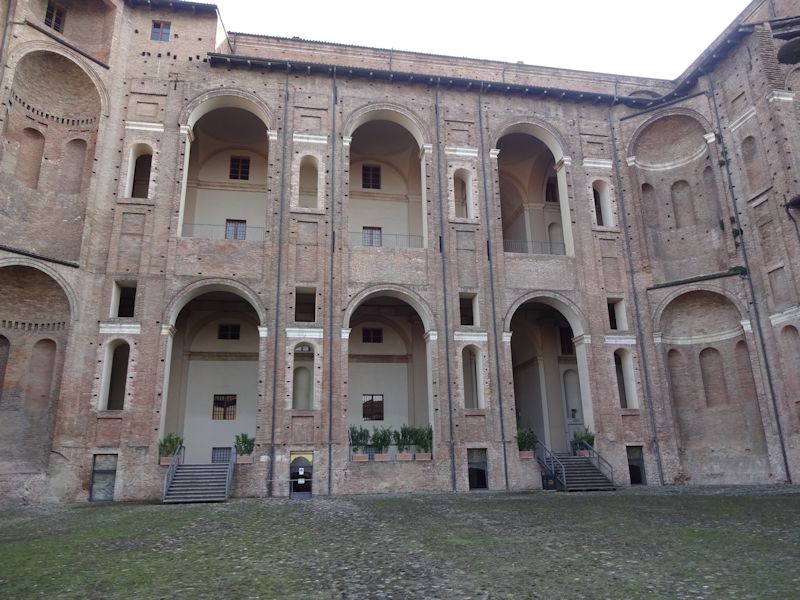
The main residential block of the Palazzo Farnese, housing the Civic Museums, including the pinacoteca in the "Duchess' apartments", an archaeological museum that features the famous Piacenza Liver (an Etruscan bronze piece used for teaching divination techniques), the obligatory museum of the Risorgimento (old uniforms and prints and drawings of Garibaldi), a museum of ancient weapons, some coaches and carriages, lots more.

Beginning with a very cute Madonna and Child, discovered during the building of the Palazzo Comunale in 1281.
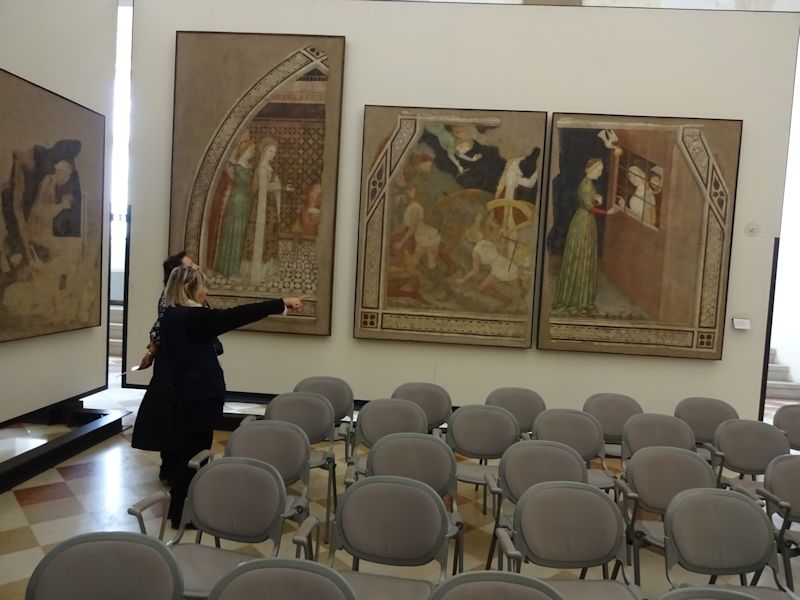
Our loquacious and very helpful guide on this floor (with Kristin as translator when required). This is the Saint Catherine of Alexandria room.

Poor St Catherine -- the spiked wheel was not enough, she was finished off with a beheading, by the Roman Emperor Maxentius in the early 4th century -- one of the most venerated martyrs in the Middle Ages, she was a daughter of the Roman Egyptian governor, a famous virgin and eloquent debater, and much later an advisor to Joan of Arc. Angels carried her body to Mt Sinai, where her monastery, founded by the Eastern Emperor Justinian, remains.
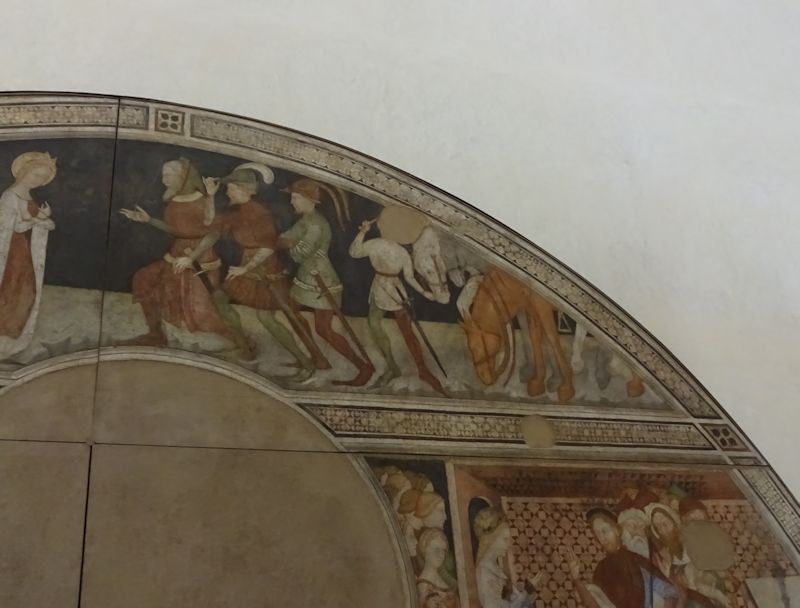
Kristin admires the gentleman with the mismatched green and red stockings.

Our guide explained that they started with the single-leg stockings and added inserts to stiffen them up as shoes, and thus mixing-and-matching was more or less encouraged.
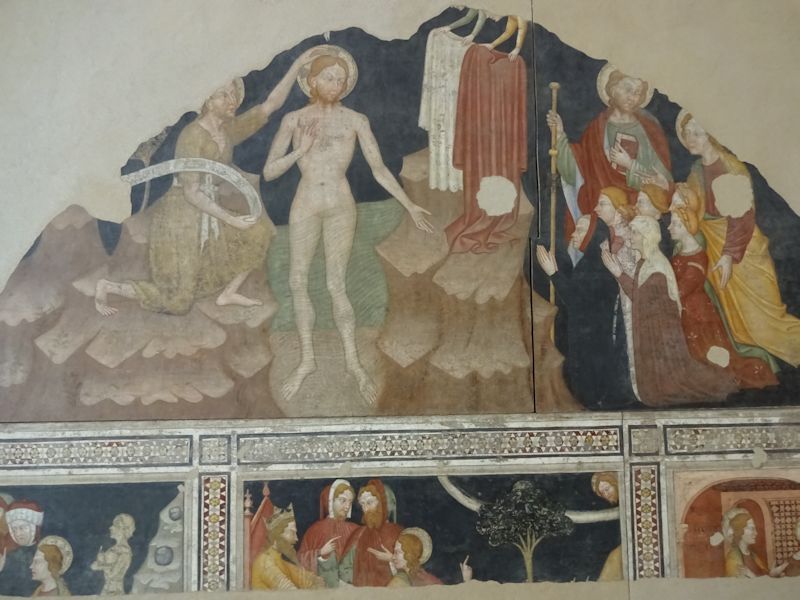
This, we were informed, is the last extant painting of Christ with no trousers on, or loincloth or whatever. That's a fresco by the same Maestro di Santa Caterina, late 14th century.
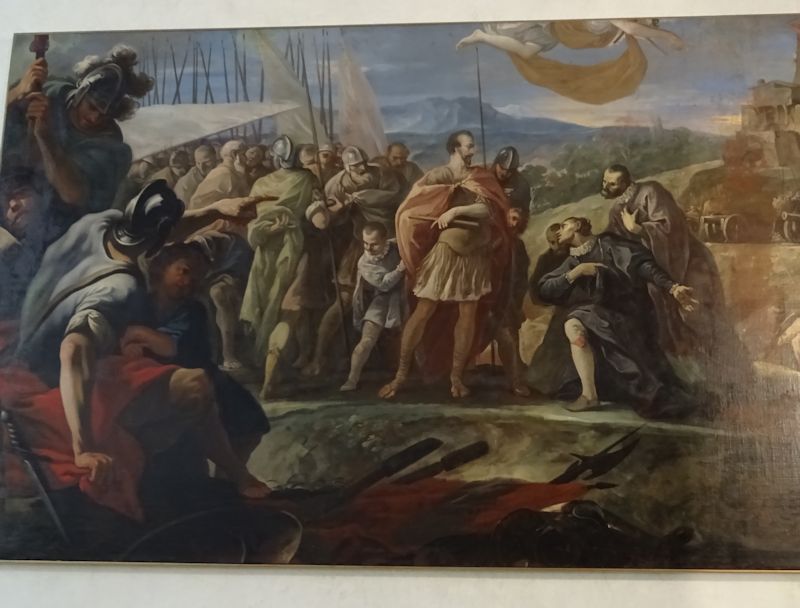
Moving right along, chronologically, this is one of dozens of paintings of Alexander Farnese, the 3rd Duke of Parma (or as they insist here, Duke of Piacenza and Parma), 1545-1592, who led the Spanish Army of Flanders in the Revolt of the Netherlands, and captured many rebellious cities largely by his clemency to others. When required, however, he could out-general the best of them, including the English forces aiding the Dutch States-General. (Most recommended amongst many, G. Parker, The Dutch Revolt (Cornell UP, 1977).)
Most of these are by Sebastiano Ricci and Giovanni Draghi in the 1680s for the Fasti Farnesiano, carried off to Naples in 1734 and (most of them) returned to Piacenza in 1928.
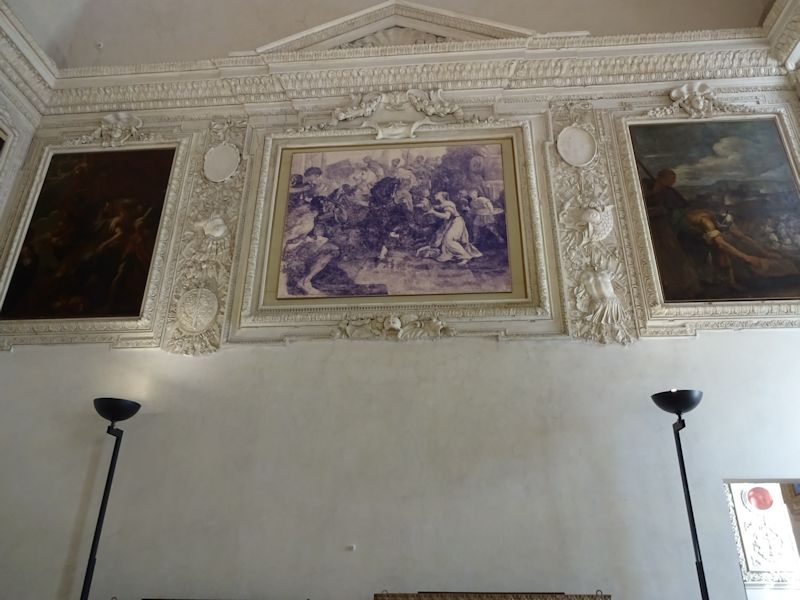
When, in 1731, the male line of the Farnese ran out, Don Carlos of Bourbon Spain inherited the title, and by 1734 Piacenza had been absorbed into the Bourbon Kingdom of Naples and Sicily. Most of the best of the family's art collections were ripped off to adorn the Neapolitan drawing rooms, and the Pinacoteca here retains their ghosts with prints as above. Some of the rooms are distressingly made up of mostly place-holder prints.
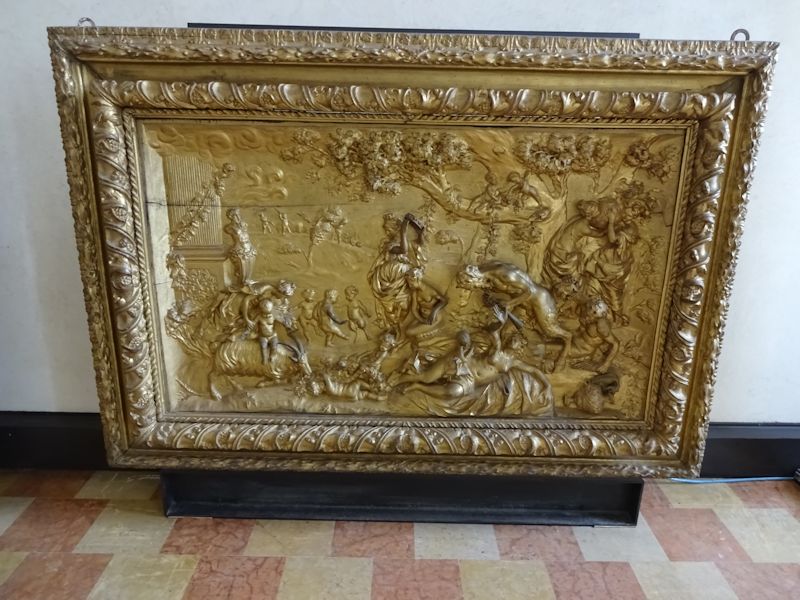
A fabulous fireplace screen
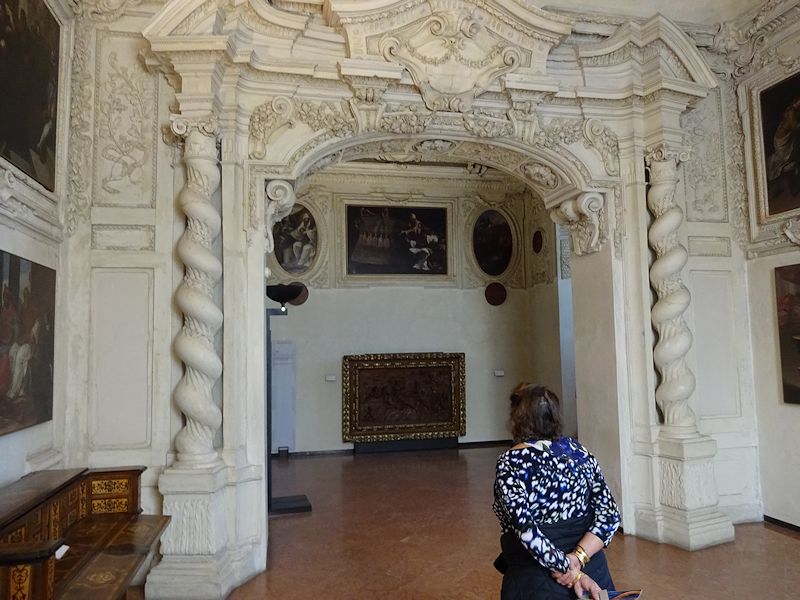
Alessandro the 3rd Duke's fancy bedroom
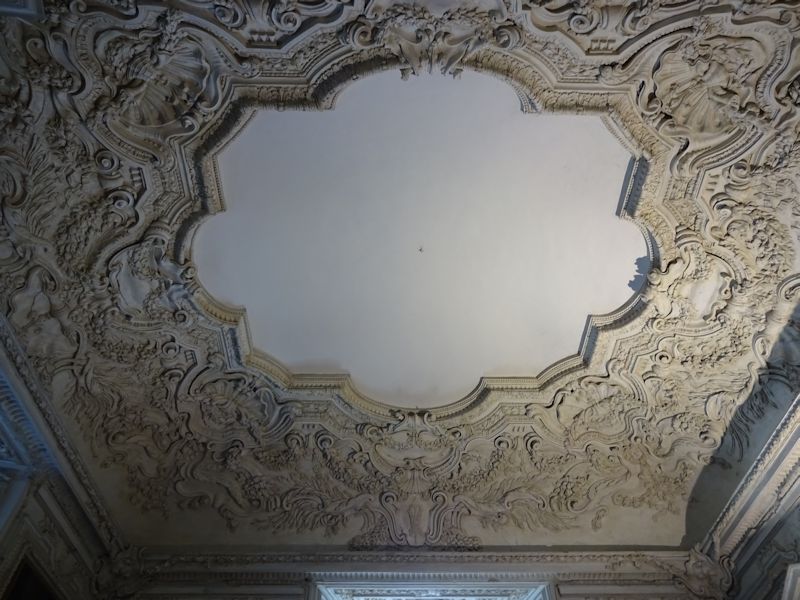
Great stucco work, with the central fresco hiding out in Naples

The Duke's bedroom
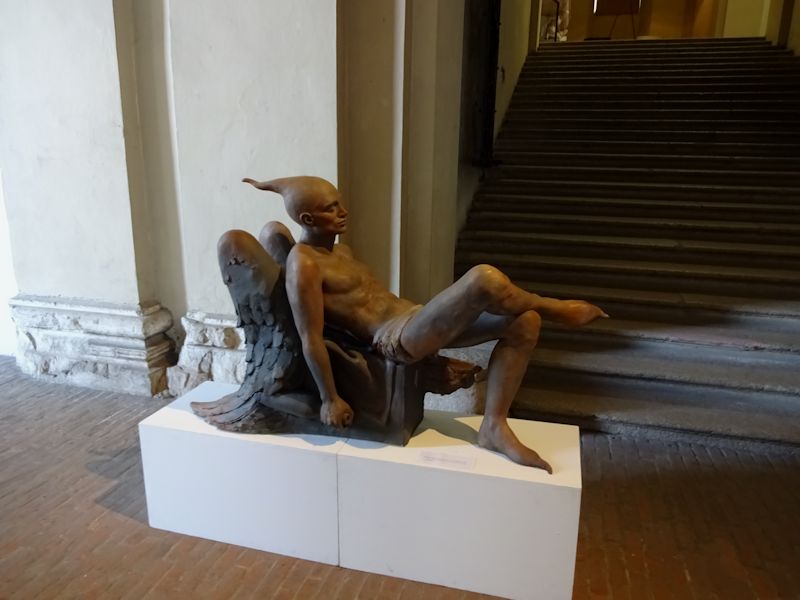
An outer space character, or angel, or radish. This is an exhibition of very interesting contemporary works by Giuseppe Tirelli, they're all over the place.
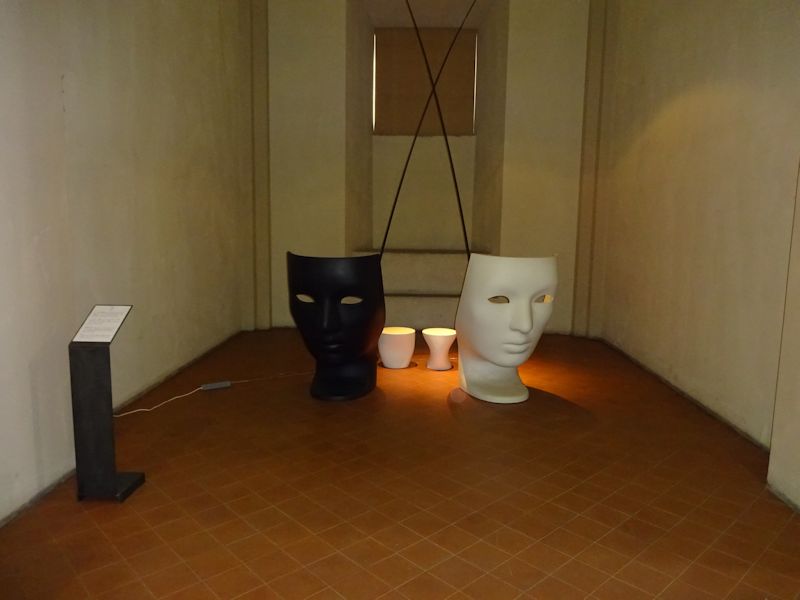
NEMO chairs by Fabio Novembre (quite the fad; a friend of ours had one shipped in, not cheap)

Kristin and the NEMO chairs
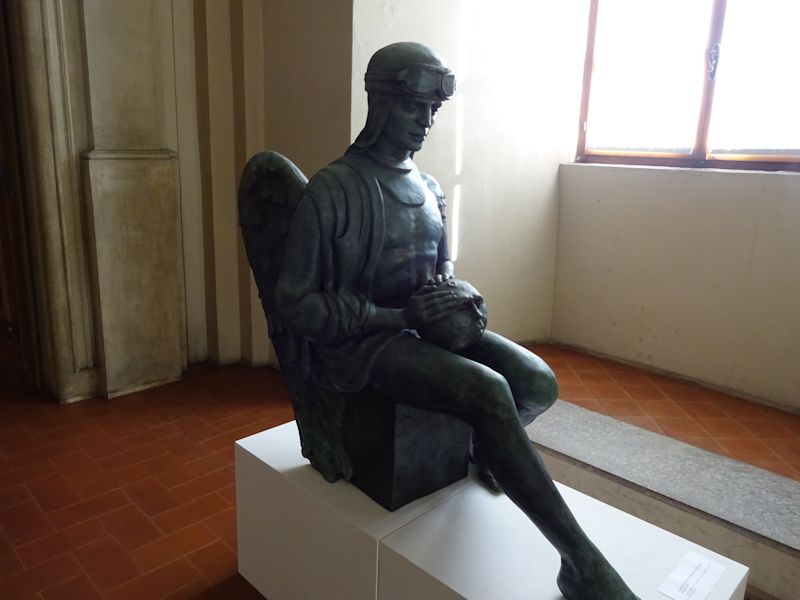
A Tirelli aviator, or something
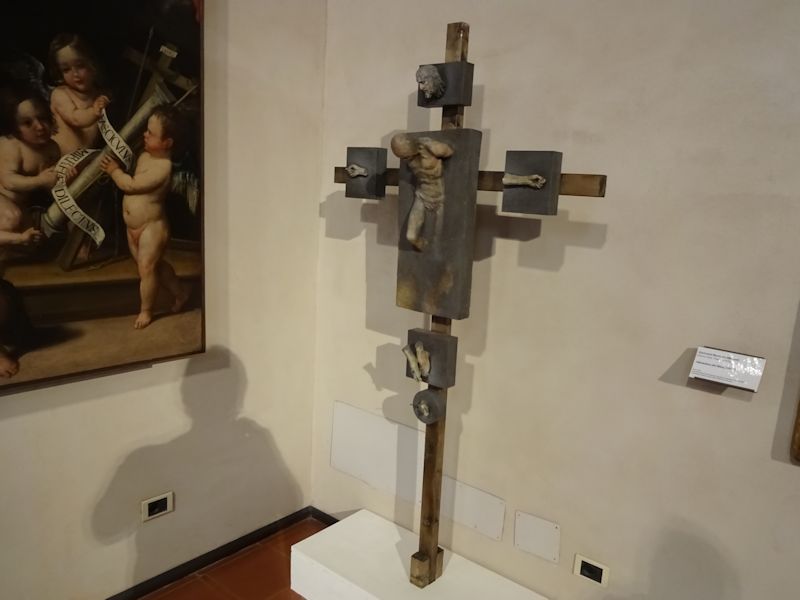
Senza commento
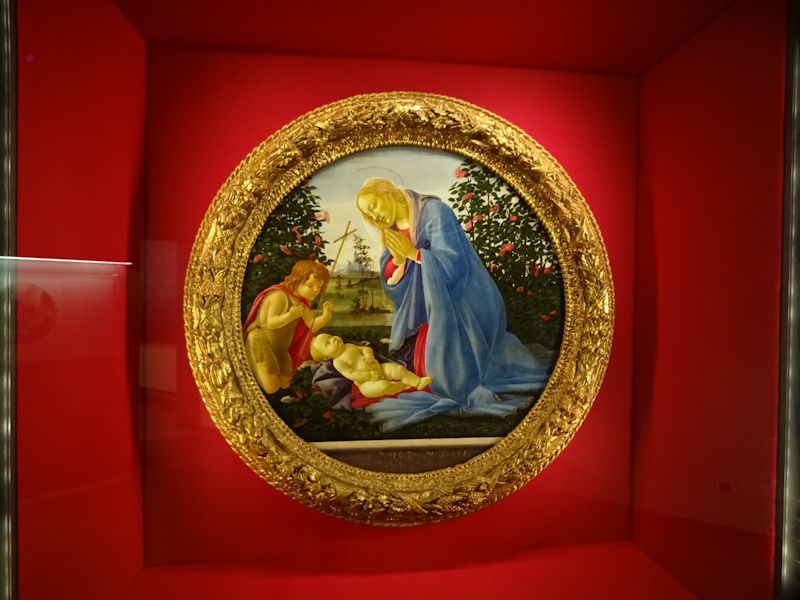
The Farnese Palace's pièce de résistance, Botticelli's Madonna and Child with St John the Baptist
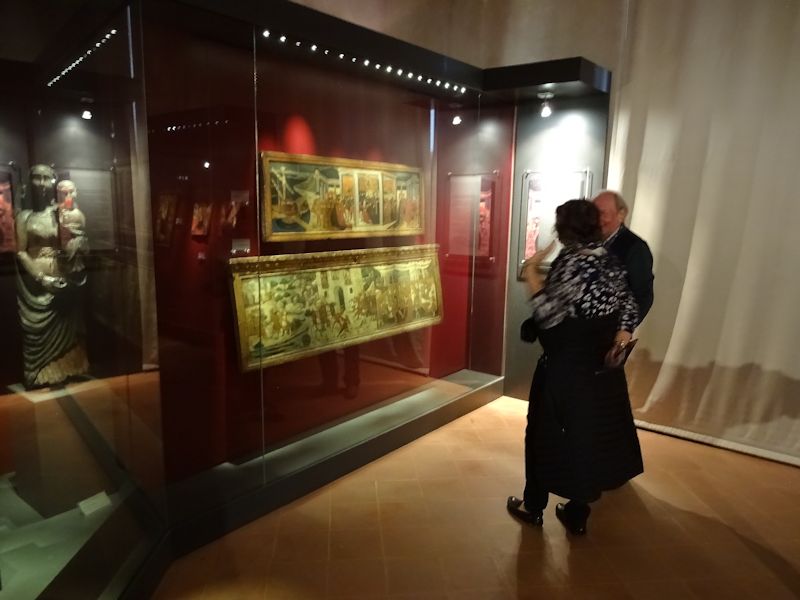
Kristin trading humorous anecdotes with another guide
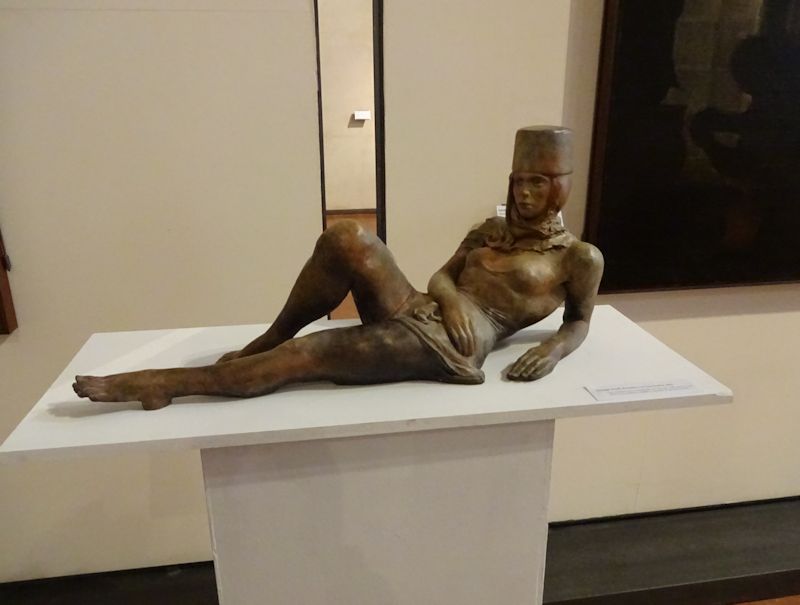
The thinker with a frog. Another Tirelli. The description says something to the effect that the courtesan is discussing philosophy with a frog, in the hope that its amphibian appearance disguises a Young Prince.

We collect beheadings. This David/ex-Goliath is listed as by an 'Unknown Painter Active in Rome, ca. 1650'.
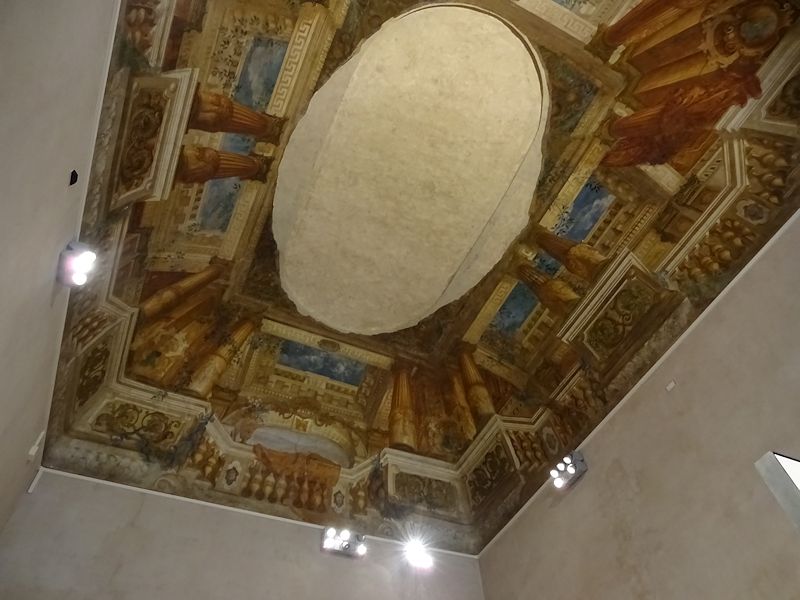
A trompe-l'oeil ceiling with a real-life piece carved out of it by the Bourbons
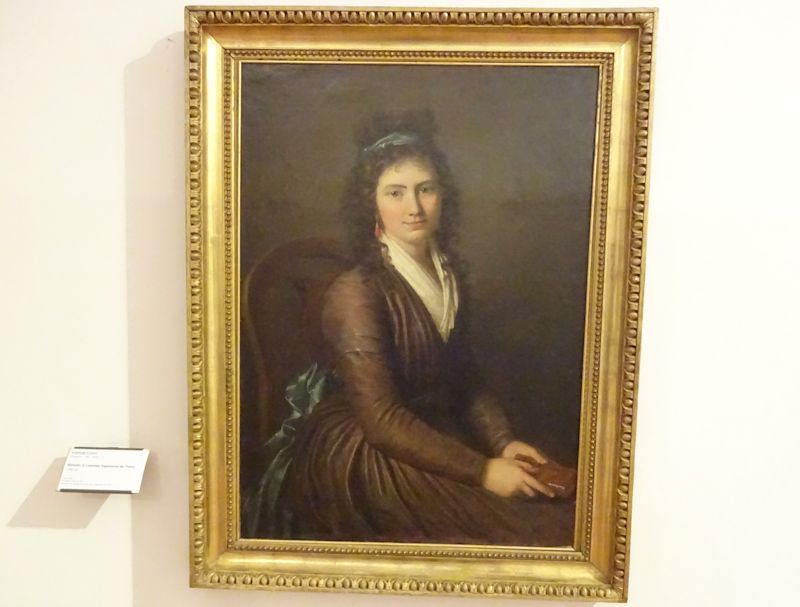
A lovely picture, described as a portrait of Caterina Anguissola da Travo, done in 1790-92 by Gaspare Landi, a successful painter from a cadet branch of the powerful local noble family of Landi, who worked mainly in Rome but kept returning to his Piacenza birthplace to work but becoming quickly bored and moving back to Rome. There are at least two noble ladies of this name associated with the nearby commune of Travo in the late 18th century, but neither looks like she'd look this young, or this old, in 1790.
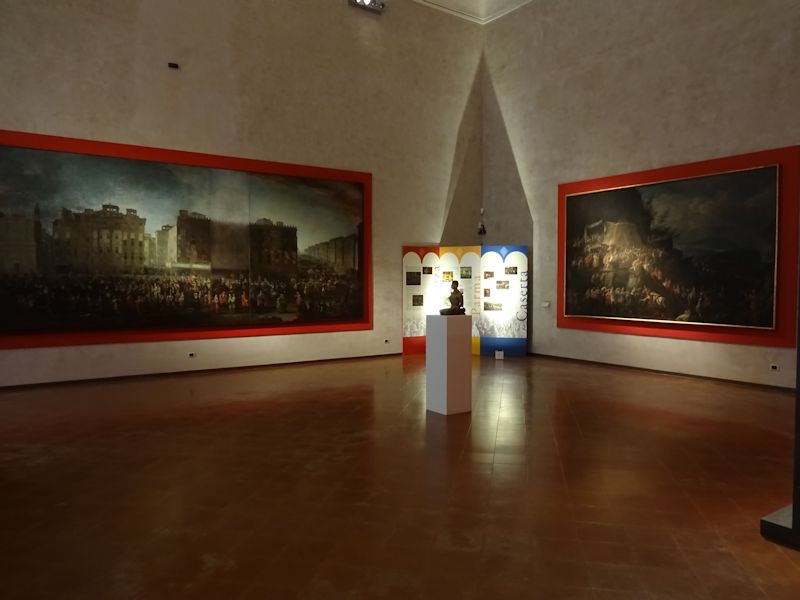
The beautiful Civic Museum in the Palazzo Farnese

The gatehouse and courtyard. The Farnese palace was built over an old fortress of the Visconti rulers dating from 1352.
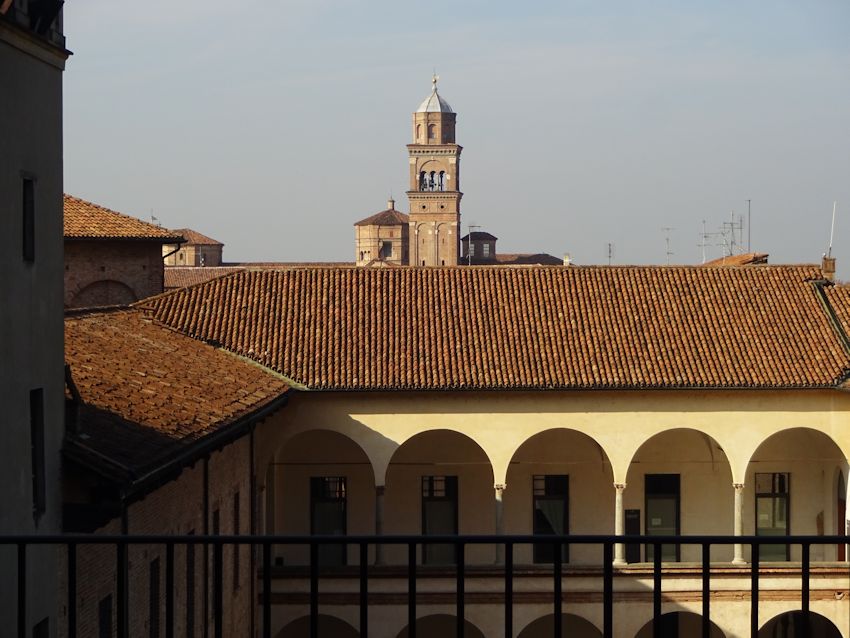
A nearby church (the San Sisto, or Saint Sixtus), from the Farnese Palace
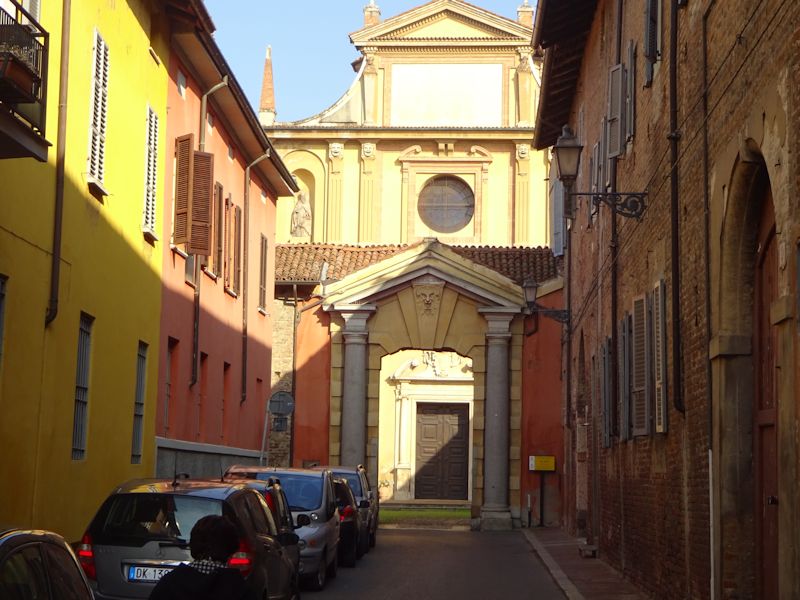
We're looking for the San Sisto now, up this little alley (the Via San Sisto).
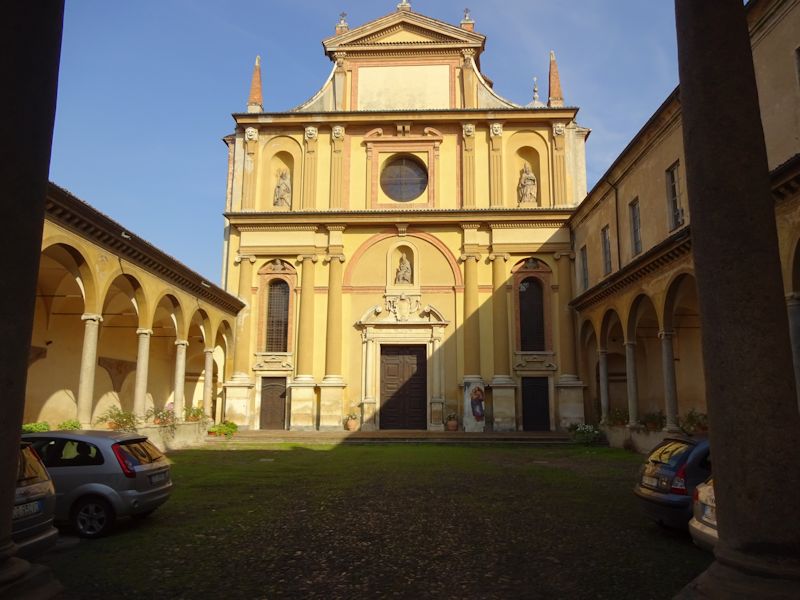
Very nice (though we can't get in). The Benedictine convent here was founded in 874 by Queen Angilberga from nearby Parma, who was the wife of the Emperor Louis II, Charlemagne's great-grandson, and was exiled to Swabia after Boso V of Arles kidnapped her and her daughter Ermengard and married the daughter. She was allowed to return to Italy in 896 and became abbess of her own abbey to the end of her life, which was soon. The present version of the church building was consecrated in 1511.
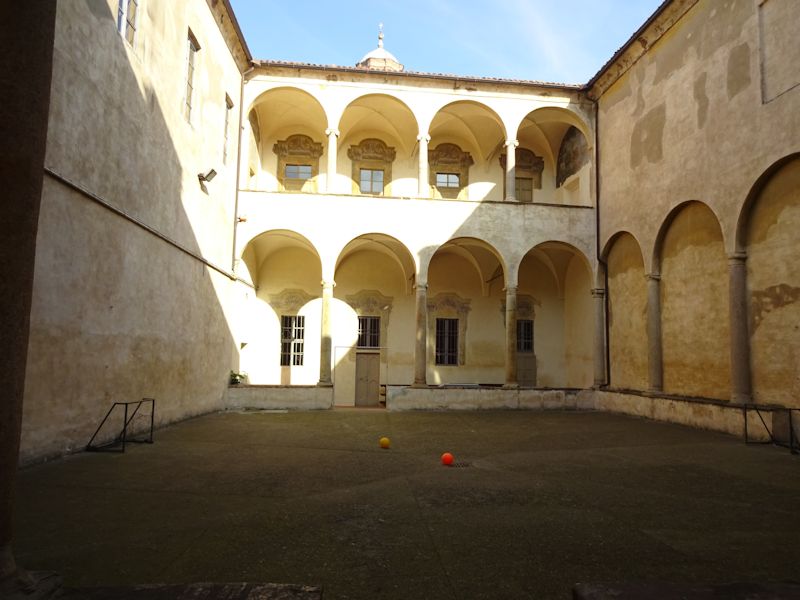
Football practice where you can find it.
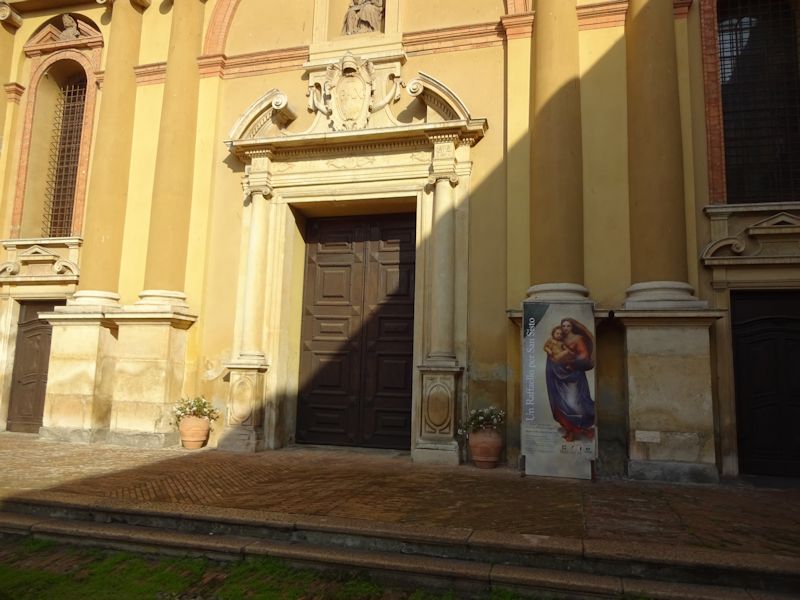
Margaret of Austria, or of Parma if you wish, who died in 1586, is buried here, but we didn't get in to visit her altar and tomb, which are said to be facing the chapel of the patron saint of artillerymen. In fact, the former monastery that's attached to this church is presently an Italian military installation.
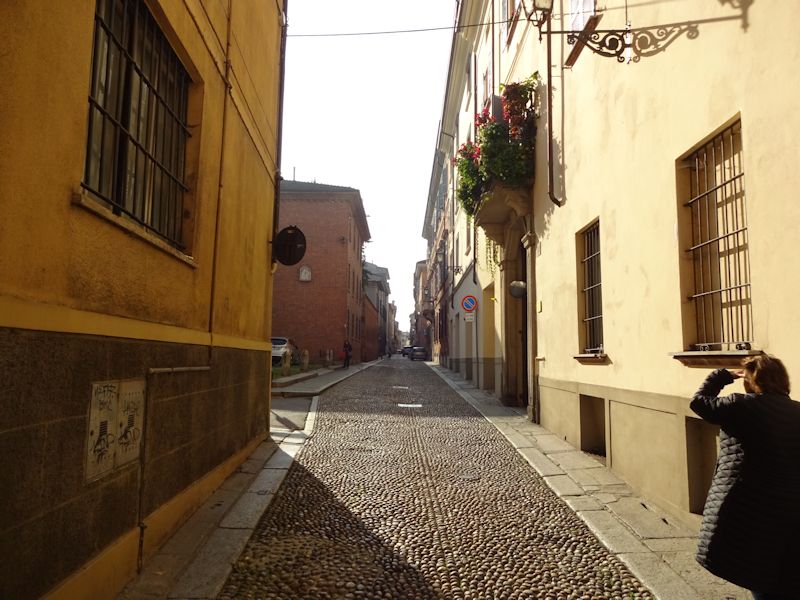
Piacenza street scene
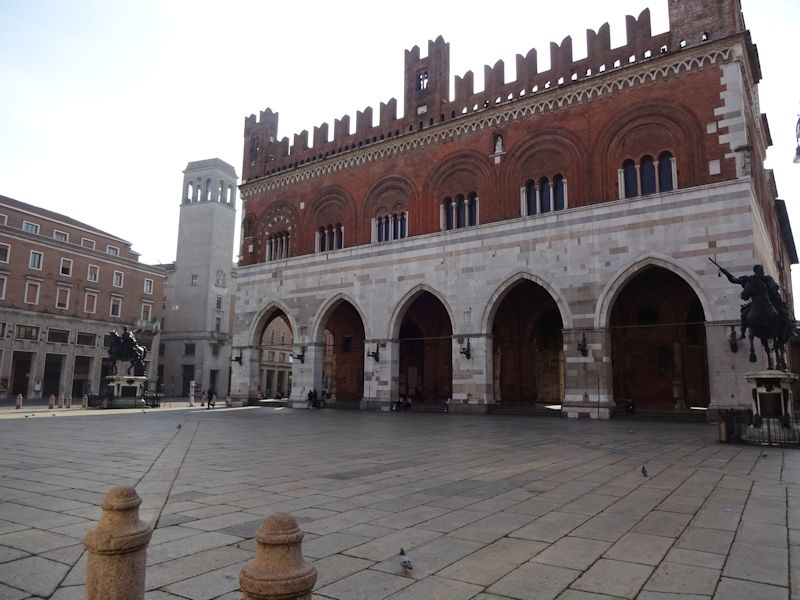
Back past il Gotico; now we're looking for the Duomo

The Via XX Settembre between the Piazza Cavalli and the Duomo
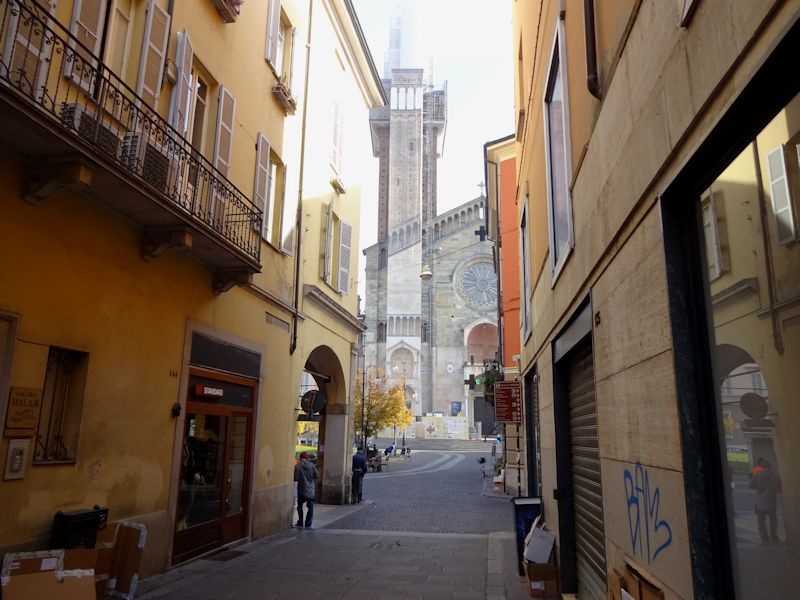
That's the Duomo, the Cathedral of Piacenza, looking a little funny today.

Turns out that it's another trompe-l'oeil, a painted belltower tacked onto the front of the renovation scaffolding. A nice but expensive touch.

Beautiful arcades along the Piazza Duomo
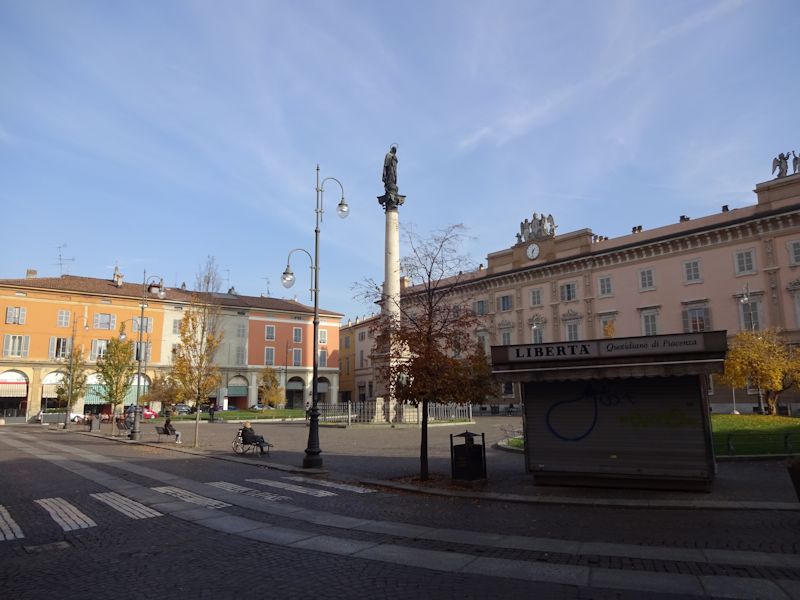
The Piazza Duomo
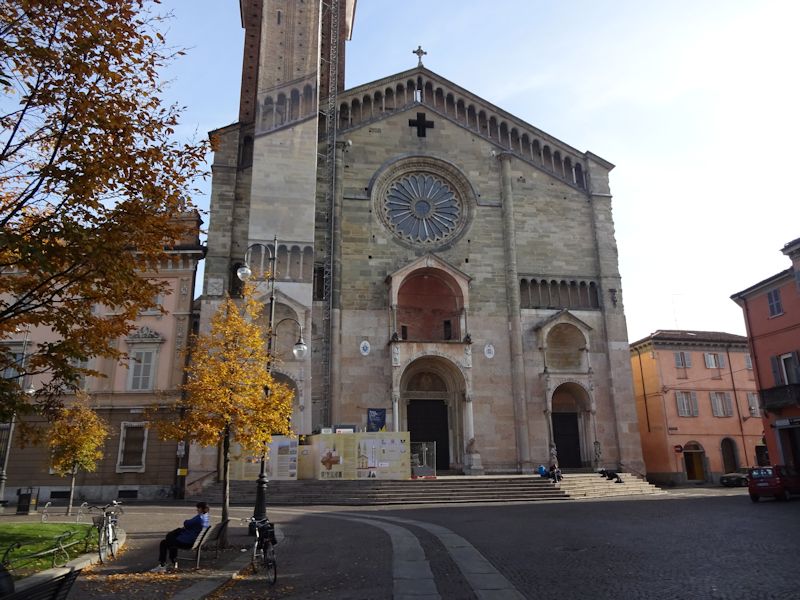
The Romanesque cathedral was built between 1122 and 1233 and is said to be fantastic inside; who knows? It was built over an early Christian basilica that was knocked down by Totila the Ostrogoth during the Gothic Wars, in 546. It houses the relics of Santa Giustina, the co-patron saint of Piacenza, after her own cathedral fell in during an earthquake in 1117.
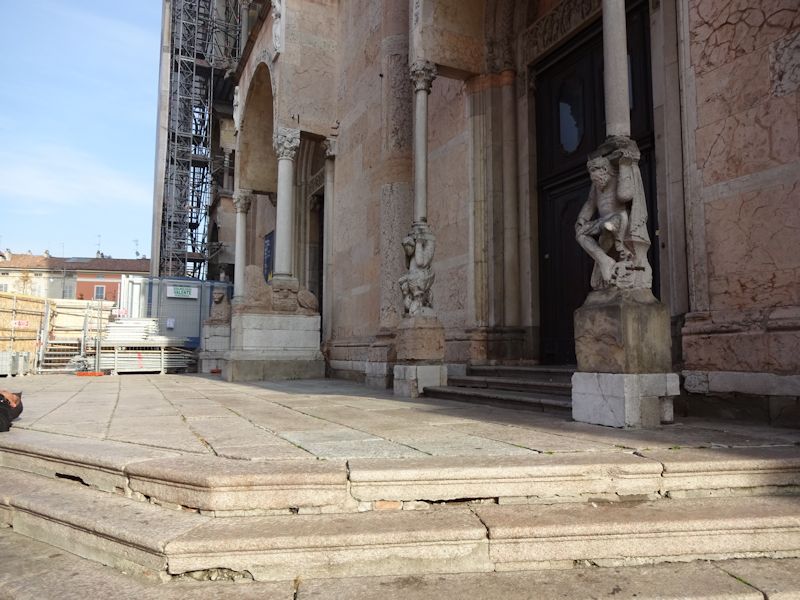
The interior, by all accounts, is brilliant, which we will take upon faith, as they won't be reopening this thing anytime this afternoon. It's a pity. But probably necessary.
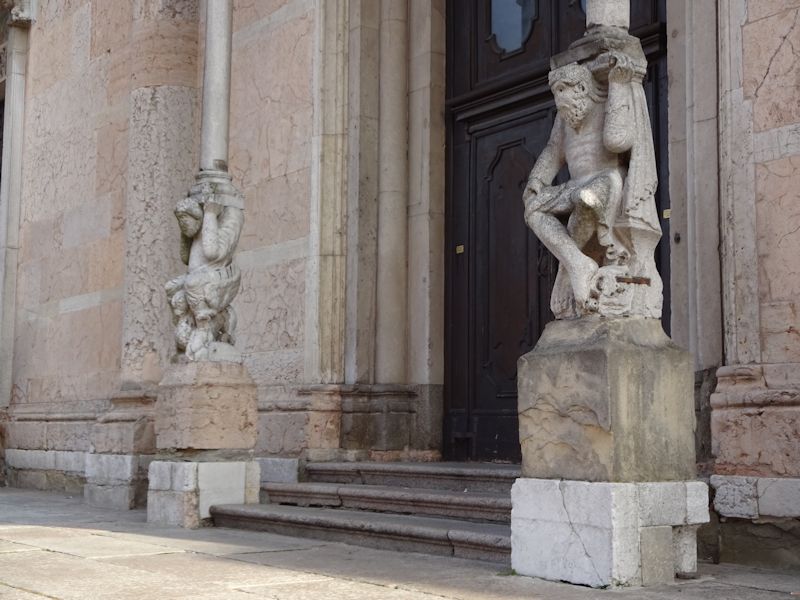
Long-suffering telamons
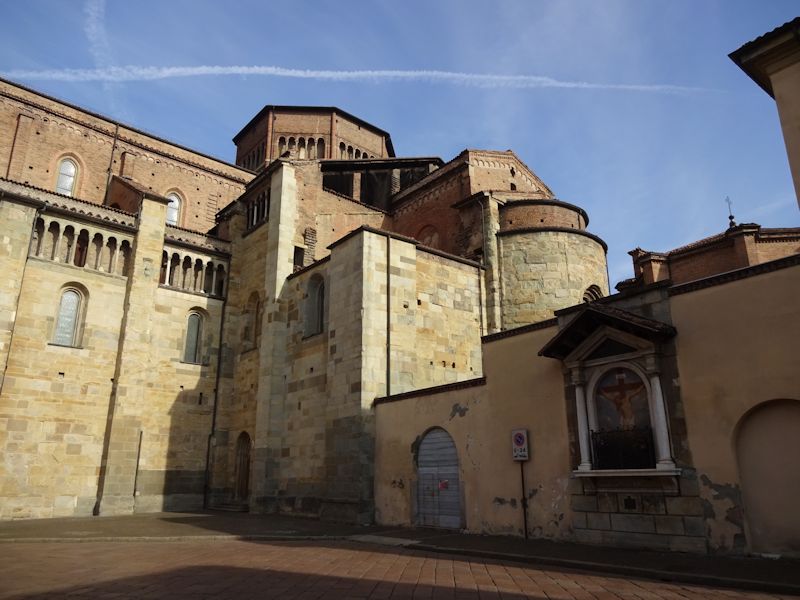
Around the side of the Duomo

Perhaps we can come back another time.















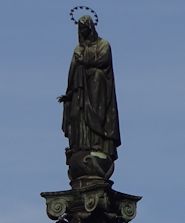 Dwight Peck's personal website
Dwight Peck's personal website











































